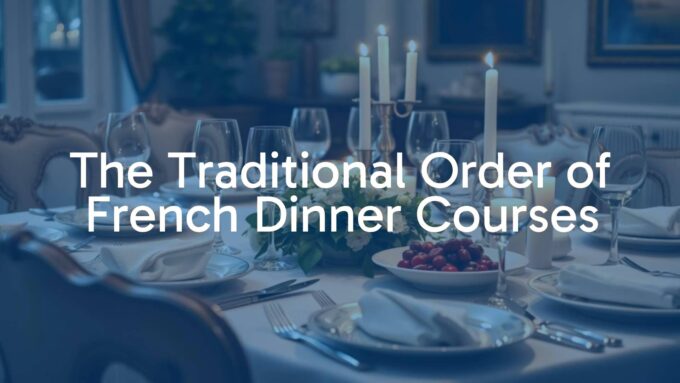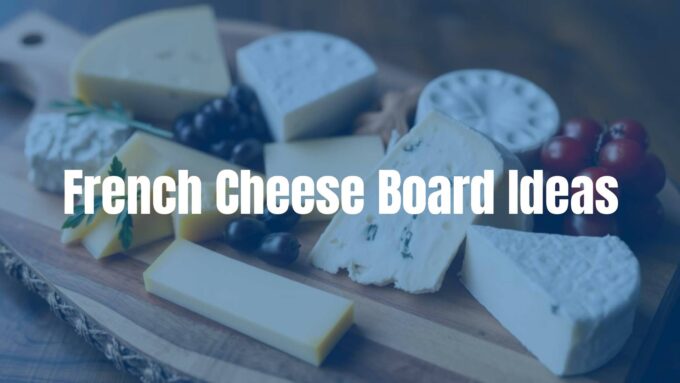Eating in France is a special experience, where each meal is treated with care and respect. If you’re planning to enjoy dishes like coq au vin or Comté cheese, knowing French food etiquette is essential. Good manners at the table go hand in hand with understanding French food culture. Here, eating is not just about filling your stomach – it’s about enjoying the meal, the people with you, and the tradition behind every dish. So, what are the basic rules everyone should know?
French dining customs focus on tradition, respect, and a true love of food. They guide everything from how you greet people at a restaurant to the way you sit and handle your fork and knife. Meals in France are usually slow and relaxed, giving everyone time to talk and enjoy what’s on their plate. Unlike in some countries where meals are quick, the French take their time and expect you to do the same.

Main French Food Etiquette Rules
The key to French food etiquette is respect – for the food, for the person who cooked it, and for others at your table. There are many unwritten rules that help meals feel friendly and well-organized. It’s about paying attention, taking part in the meal, and making the experience good for everyone.
When you walk into a French restaurant or someone’s home, you’re joining in with a long tradition. Meals are seen as an important chance to be together, not just a way to get fed. Quality matters more than quantity, and sharing a good experience is the goal.
Why Does Etiquette Matter at the French Table?
In French dining, etiquette is the backbone of the whole meal. Eating together is treated seriously – it’s about art, hospitality, and good company. Following these customs keeps the meal pleasant and helps everyone connect. Ignoring the rules may look rude and can cause awkward moments, like a waiter giving you an odd look.
Meals are special in France. Sitting together for lunch or dinner is a daily highlight, where food and friendships are important. Good manners protect these happy moments, preventing distractions or misunderstandings. This helps keep mealtime peaceful and enjoyable.
How Are French Table Manners Different from Other Places?
French table habits are much more formal than in many other countries, especially compared to the U.S. For example, in America, servers check in often, but French waiters give you space and come when needed. This sometimes confuses foreign guests, who may think service is slow – but it’s just a way of letting diners enjoy themselves without being disturbed.
French meals are also much longer, with no rush to finish quickly. The way people handle their knives and forks is also stricter, with cutlery used for almost all foods. This formal style simply reflects different values about eating and socializing.
Arriving and Entering for a Meal in France
French table etiquette actually starts before you sit down. Whether you are heading to a restaurant or someone’s home, how you arrive makes a difference. These first moments show whether you fit in and understand local habits.
In France, greeting people and showing respect as soon as you arrive is important. The way you enter will help you feel comfortable and well-received.
Should You Wait to Be Seated?
Whether to wait for a table in France depends on the restaurant. In casual places, you can usually seat yourself, but if you’re not sure, just ask a staff member politely, “On peut s’asseoir?” (can we sit down?). On a terrace, it’s usually first-come, first-served. In fancier restaurants, staff will greet you and ask about your reservation. In homes, never be early for a meal. Arrive 10-15 minutes late for a dinner party. For restaurants, be on time, especially at busy places. If you’ll be over 30 minutes late, calling ahead is expected.
| Situation | What to Do |
|---|---|
| Casual Restaurant | Usually seat yourself; ask if unsure |
| Formal Restaurant | Wait to be greeted |
| Dinner Party | Arrive a little late; never early |

Should You Bring a Gift for the Host?
If invited to someone’s home, always bring a small gift. Never show up empty-handed. Wine is the safest bet, but snacks like nuts, crackers, or olives are also fine. A homemade treat is nice but not required. The point is to show thanks for being invited.
At the Table: Manners and Where to Sit
After you arrive, certain habits at the table help everyone feel comfortable and keep the meal flowing smoothly. Where you sit, where you put your hands, and how you hold yourself all show your awareness of French traditions.
Where Do You Put Your Hands and Elbows?
Keep your hands on the table, not in your lap. This old habit shows you have nothing to hide. Elbows, however, should stay off the table. Rest your hands lightly when not holding utensils, showing good posture but not being stiff.

What’s the Right Way to Sit?
Sit up straight. Your back shouldn’t slouch, and you shouldn’t lean toward the plate. Bring your fork to your mouth, not the other way around. The goal is to look comfortable but tidy at all times. Take small bites of difficult foods rather than bending toward the table.
Who Sits Where?
Seating has traditions, especially in bigger groups. Couples usually sit side by side. The host often decides where everyone should go, sometimes swapping men and women around the table. At a table for two, the woman often faces the room. In relaxed settings, this is less important, but it still can happen.
French Cutlery and How to Use It
Using cutlery in France follows certain rules that are less common in some other countries. These customs show respect for the meal and those you’re eating with. Paying attention to these habits makes you look polite and informed.
How to Hold Knife and Fork?
In France, you keep your fork in your left hand and your knife in your right, all through the meal. Don’t switch hands. The fork points down, and you use your knife not just to cut but also to help guide food onto the fork. Don’t stab your food; use the utensils lightly and steadily.
Should Fork Tines Be Up or Down?
The fork usually stays with the tines down while you eat. This matches the “Continental” style, where food is balanced on the back of the fork. The tines might face up to scoop soft foods, but most of the time, they stay pointed down.
How Do You Show You Are Finished Eating?
When you’re done with your meal, place your knife and fork side by side, pointing up to the top left of the plate, with fork tines down. This tells staff it’s time to clear your plate. If you’re just resting, cross your fork over your knife on your plate.

Napkin, Bread, and Plate Rules
Other items on the French table also follow certain customs. These might seem small, but together they help make everyone feel comfortable and respectful at the table.
Where Does the Napkin Go?
Once seated, place your napkin on your lap and leave it there during the meal. If you leave the table mid-meal, put your napkin on your chair. At the end, lay it loosely on the table next to your plate. Don’t fold it neatly; just leave it simply to the side as a sign that you’re done.
How Should You Eat Bread?
- Tear bread with your hands, never use a knife.
- Bread goes directly on the table next to your plate (top left), not on a separate bread plate.
- Don’t eat bread before the meal begins or with butter (except at breakfast).
- Bread helps push food onto your fork or soak up sauce.

Are You Expected to Finish Your Plate?
Yes. In France, you are generally expected to finish what’s on your plate, especially if you are a guest in someone’s home. Leaving food can be seen as impolite. If you can’t finish, leave leftovers nicely in one section of the plate. Don’t ask for seconds unless offered. Doggie bags are not typical, even though some bigger restaurants are now starting to offer them to reduce waste.
Drinks and Toasting in France
Drinks, especially wine, are a big part of the French mealtime. The habits around drinking and toasting are traditional and important for being part of the group.
How Do You Give a Toast?
To say “cheers” in France, say “Santé!” or “À votre santé!” and always make eye contact when clinking glasses. Not looking people in the eye is considered bad luck. Don’t cross your arm over someone else’s glass when toasting. Wait until everyone has their drink before raising your glass.
Wine Serving Customs
- Wine is served with meals, not before or after.
- Always pour for others before serving yourself; men usually pour for women.
- If you don’t want more wine, leave your glass almost full.
- Ask staff for wine advice if you’re unsure what to pick with your meal.
Cheese and Salad: How and When
Cheese and salad are important parts of a French meal and are usually served in a certain order. Understanding how and when to enjoy these helps you fit right in.
When Is Cheese Served?
In France, cheese comes after the main meal and before dessert. Take small pieces of two or three kinds, cut fairly so others get both rind and middle. Don’t take the last piece from a cheese plate, and use the server’s knife – not your hands. Don’t eat cheese with buttered bread or expect cheddar – try what’s offered!

How Should Salad Be Eaten?
Don’t cut salad leaves with your knife and fork. Instead, use your fork and knife to fold them into small bundles you can eat easily. Salad often comes after the main dish and before cheese or dessert. It helps clean your palate between courses.
If You Don’t Like or Can’t Eat Something
Sometimes you may have to politely accept, refuse, or leave food at the table. How you handle this is important for avoiding uncomfortable moments.
How to Accept or Refuse Food?
It’s best to accept a little of each course to show you appreciate the host’s effort. If you really can’t eat more, politely say, “Non, merci, c’est délicieux mais je n’en peux plus” (No, thanks, it’s delicious but I can’t eat more). Only oysters and curry are commonly refused. Don’t ask for changes to menu items in restaurants – if you have allergies, call ahead.
What If You Don’t Like a Dish?
Never tell your host you dislike what they’ve made. Eat a small amount if you can, or just quietly move the food aside. Ask for extra condiments only if offered. In restaurants, don’t ask for sauces like ketchup with steak – it’s seen as disrespectful to the chef.
Dining Out: Tipping, Leftovers, and Pace
French restaurants have their own way of handling things like tipping, leftovers, and how quickly you’re expected to eat. It’s good to know what to expect so you can relax and enjoy your meal.
Do You Need to Tip?
No. French restaurant bills include service. Waiters are paid fairly, and a tip is a small bonus for good service, not a requirement. For coffee or drinks, rounding up or leaving a coin is nice. For big meals, you can leave 10-15% if you wish, but no one expects it.
Can You Ask for a Doggy Bag?
Doggy bags are not standard in France. Portions are often smaller, so finishing your meal is normal. Some places now allow taking leftovers home to help cut waste, but it’s still unusual and could draw attention if you ask.
Will You Be Rushed to Leave?
Not at all. In France, you’re welcome to stay as long as you like. Waiters don’t hurry you out, and they won’t bring the bill unless you ask. Dinners can last several hours. When you&rsquore ready to pay, request “l’addition, s’il vous plaît.”
Finishing the Meal
How you end a meal also matters in France. It’s a chance to thank your host and show good manners as you leave.
What’s the Proper Way to Leave the Table?
Never leave a host’s table before they do. If you need to get up before the meal is done, ask politely first. In restaurants, ask for the bill and leave when you’re ready.
How Should You Thank Your Host?
A simple thank you goes a long way: “C’était délicieux, merci beaucoup” (It was delicious, thank you very much). Sincere compliments are always welcome. Thank your host as you leave, and mention you enjoyed the meal and company. If you brought a gift, this is a good time to thank them again for inviting you.












Leave a comment